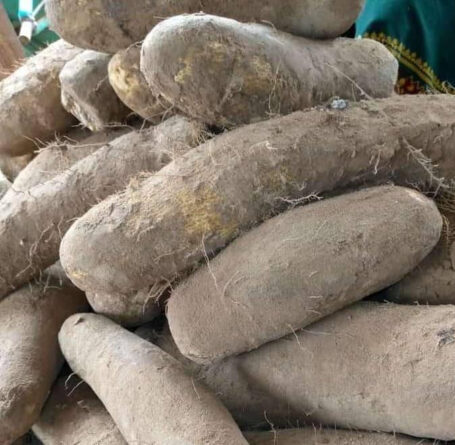Yam

Overview
Yam is perennial herbaceous and the common name for some plant species in the genus Dioscorea that form edible tubers. Yams are perennial herbaceous vines native to Africa, Asia, and the Americas and cultivated for the consumption of their starchy tubers in many temperate and tropical regions.
Cultivation Tips
Plant yam tubers or potted plants 50-60cm apart into a prepared soil. If planting leafless tubers ensure they are planted around 3-5cm deep. Water in the new yam well and keep well watered throughout the growing season. Mulch around the yam plants to suppress weeds and retain moisture.
Performance
Nigeria is the world's largest producer of yams, accounting for about two-thirds of global yam production . Nigeria produces more than 60 per cent of the entire world's yams. Yam farming offers potential income-generating activities to Nigerian farmers who can grow this versatile tuber.
Challenges
The major challenges in yam production are weed pressure, decline in soil fertility, soil borne pests and diseases, leaf disease, storage pests and diseases, labour cost for land (heap) preparation, and barn making and lack of staking materials, use of traditional technology for production and many more.
Benefits
They're a great source of fiber, potassium, manganese, copper, and antioxidants. Yams are linked to various health benefits and may boost brain health, reduce inflammation, and improve blood sugar control. They're versatile, easy to prepare, and a great vegetable to include in your diet in both sweet and savory dishes.
